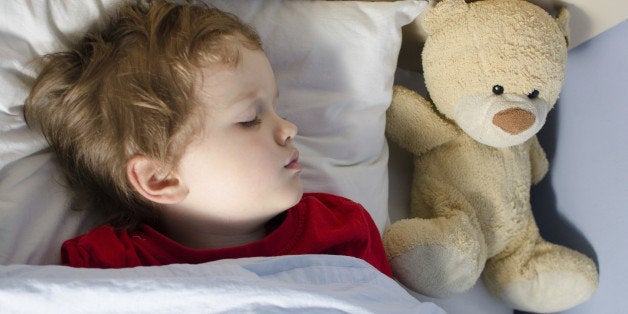
Huffington Post is proud to partner with the American Sleep Association (ASA) to promote sleep awareness.
As the days slowly get shorter and the weather begins to change, we are made aware of the fact that summer is coming to an end. As beach days turn into school days, many families are hit with the realization that summer sleep schedules are not conducive to a well rested family during the school year. To avoid the shock of the early wake up alarm, as well as a school year experienced through a haze of sleep deprivation, here are some back to school sleep tips to make the transition from summer to fall a little bit easier on your family.
1. Decide on an age appropriate bedtime for your child for the school year. Each day move your child's summer bedtime 15 earlier until you reach the newly prescribed bedtime. For example, if your child's school year bedtime will be 7:00pm, but you have been putting him or her to bed over the summer at 8:00pm, 4 days before school starts begin to move the bedtime earlier in 15 minute increments until you reach the new earlier bedtime.
2. Your household should start winding down after dinnertime and bath time. Lights in the household should be dimmed. All rough and tumble play should cease. Older children should terminate the use of electronic devices at least one hour before bedtime.
3. Every household should have a digital clock in the main living area and all children aged 2 and above should have a digital clock in their bedrooms. Children should be made aware of their bedtime and their appropriate wake up time. Having a digital clock allows for a child to have a concrete visual for bedtime and wake up time. This gives children a sense of control over their sleep rules. For young children who don't know their numbers, place a sticky note over the last two numbers after the colon. On that sticky note draw a copy of the number that signals bedtime. For example, if your child's bedtime is 7:00, draw an identical number 7 on a sticky note and place it over the :00. That way, all a young child has to do is recognize that the numbers match.
4. Reestablish a brief and consistent bedtime routine. For younger children, this routine should be no longer than 15 minutes and should be the same for naps and bedtime. Bedtime routines lower the anxiety levels for both children and adults, as everyone knows what is going to come next and it creates a feeling of a sense of control over the environment. It also assures that children will not manipulate bedtime to last too long, leading the child to become overtired before they have the opportunity to fall asleep.
5. All caregivers should together develop a plan of action for dealing with any sleep issues that may potentially arise in the new school year. Consistency, both within methods and between caregivers, is key in fixing sleep problems. Everyone who takes care of a child in relation to sleep needs to agree to the same plan of action.
6. Create a Sleep Rule Reward Chart. Choose the most important sleep rule for your child and write it on a chart. Only include one sleep rule at a time. Your child can help decorate his or her sleep rule chart. Take your child to a 99 cent type store and have him/her pick out a treasure chest and fill it with little rewards such as bouncy balls and erasers. Your child can help decorate the treasure chest as well. At wake up time, if your child has followed the sleep rule, s/he gets to put a sticker on the chart and choose a reward from the treasure chest. Reward charts have proven to be very effective in working with behavioral sleep problems.
7. Stay consistent, firm, confident and committed to healthy sleep for your child. With parents' help, children can be taught good sleep habits and families can be well rested!
Wishing all children returning to school a very successful school year and wishing all families many long and peaceful nights of sleep!
Author: Whitney Roban, Ph.D.
Dr. Roban is a pediatric sleep specialist and member of the Advisory Board of the American Sleep Association.
Dr. Whitney Roban obtained a Ph.D. in Clinical and School psychology from Hofstra University, Whitney began her career creating psychoeducational books and games for Childswork/Childsplay.
For more information about Dr. Whitney Roban, SLEEP-EEZ KIDZ and SLEEP WELL/WORK WELL, please visit www.sleepeezkidz.com. You can also visit facebook.com/sleepeezkidz and twitter.com/sleepeezkidz.
The primary goal of the American Sleep Association is to increase public awareness about the importance of sleep health and the dangers of sleep disorders. ASA was founded in 2002 by sleep professionals as a member-driven public awareness effort. The article was originally posted at Back To School Sleep Tips